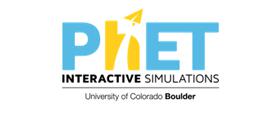Quantitative Chemistry - Gases, Solutions and Titrations
This list contains resources for:
-
calculations involving gas volumes
-
calculations involving solutions and molarity
-
titration calculations
Whilst this list provides a source of information and ideas for experimental work, it is important to note that recommendations can date very quickly. Do NOT follow suggestions which conflict with current advice from CLEAPSS, SSERC or other recent safety guides. eLibrary users are responsible for ensuring that any activity, including practical work, which they carry out is consistent with current regulations related to Health and Safety and that they carry an appropriate risk assessment. Further information is provided in our Health and Safety guidance
Molarity
This is a good simulation that allows students to change the amount of solute and solvent and observe the change in concentration of the resulting solution and shows the point at which the solution is saturated. There is also the option to change the solute which gives an opportunity to compare their solubilities.
Titration Quizzes
A series of videos that walk through making a standard solution, how to carry out a titration and how to carry out titration calculations. There are also interactive quizzes available to schools that have signed up to the Royal Society of Chemistry programme, Teach Chemistry.
Problem Solving Tutor
A link to a useful online tutorial that explains different ways to approach different calculations students come across in chemistry. It shows how to identify relevant information in the questions and how to apply it.
Investigating Concentration
This is a good simulation to qualitatively show the relationship between solute and water and the effect on the concentration. In this simulation, the amount of water and solute can be changed along with the rate of evaporation.
Titration Investigation Simulation
A series of four simulated titrations based on different real life scenarios. This a a great walk through all the steps needed to carry out a titration and the relevant calculations. It would be good to use prior to doing a titration or for students that are unable to do the practical work.

